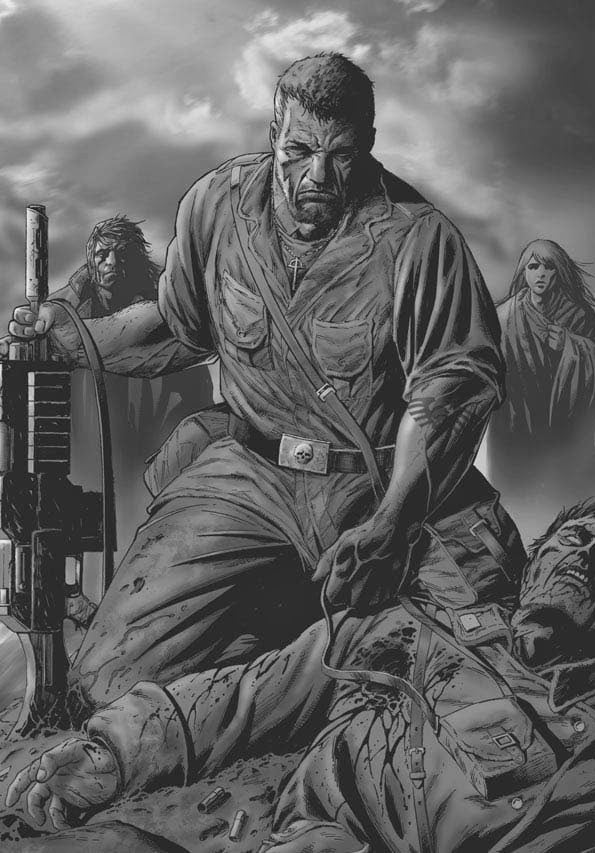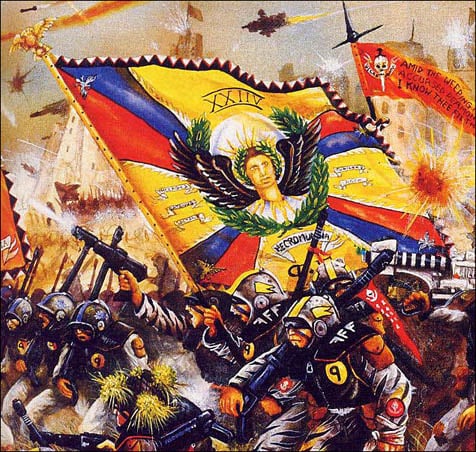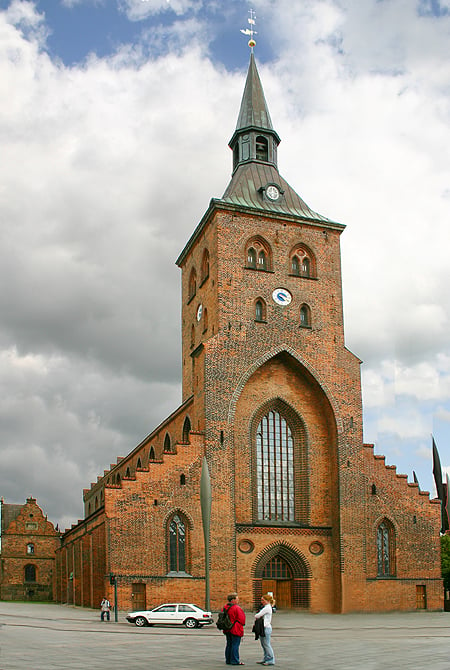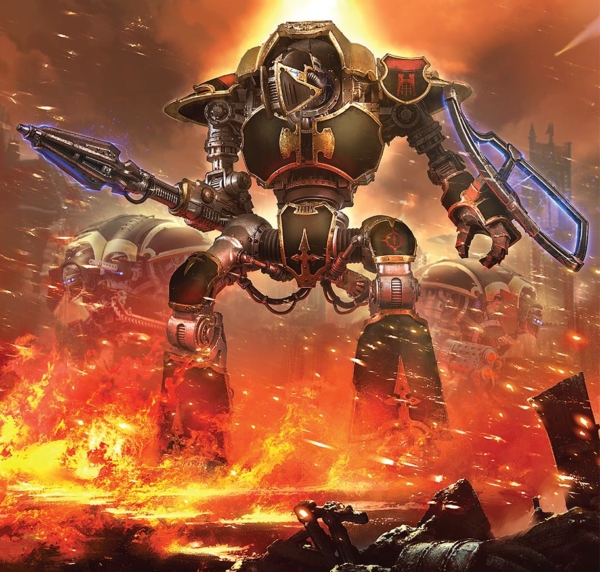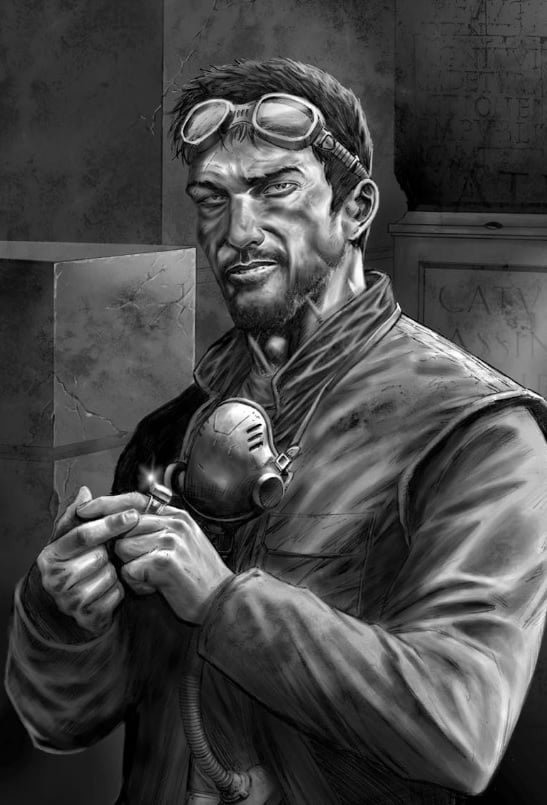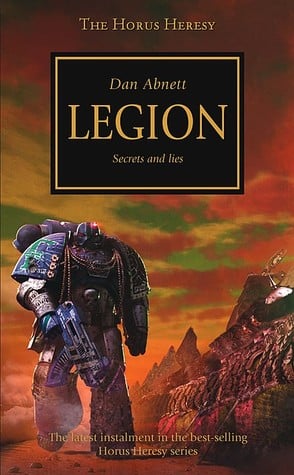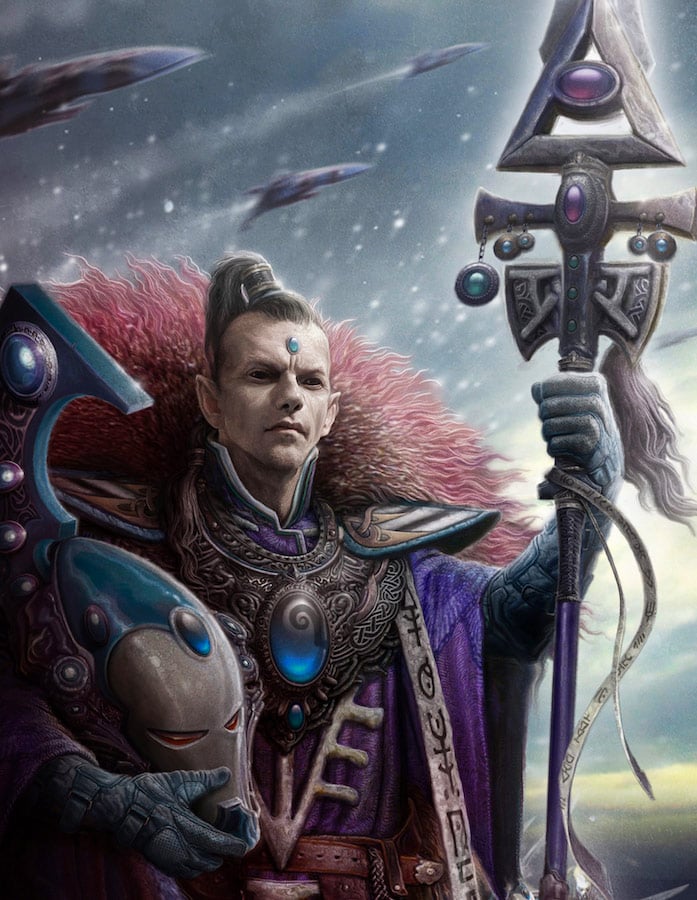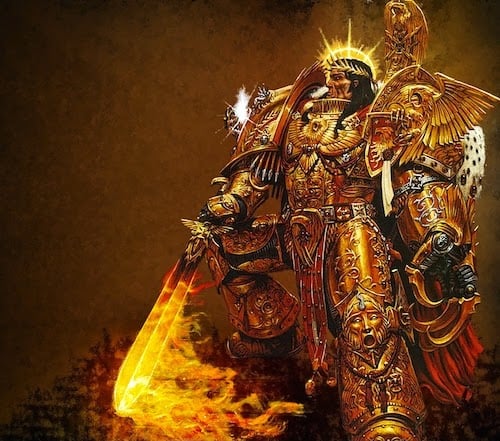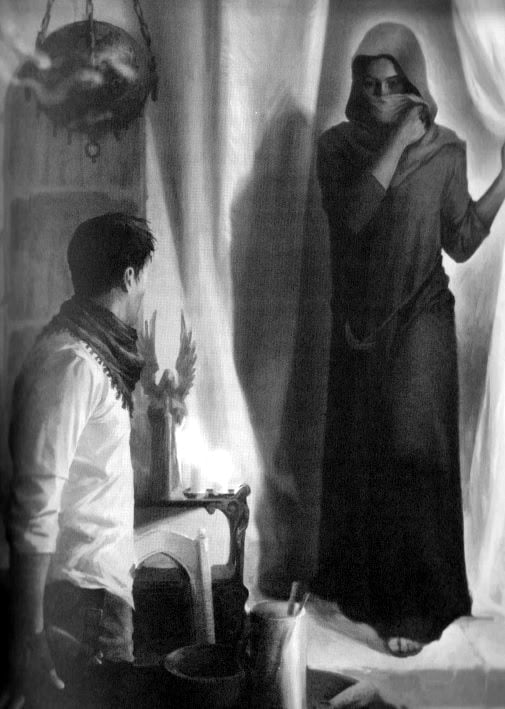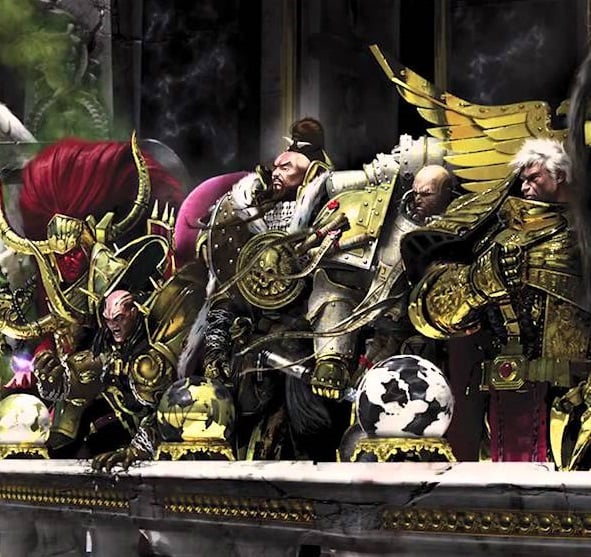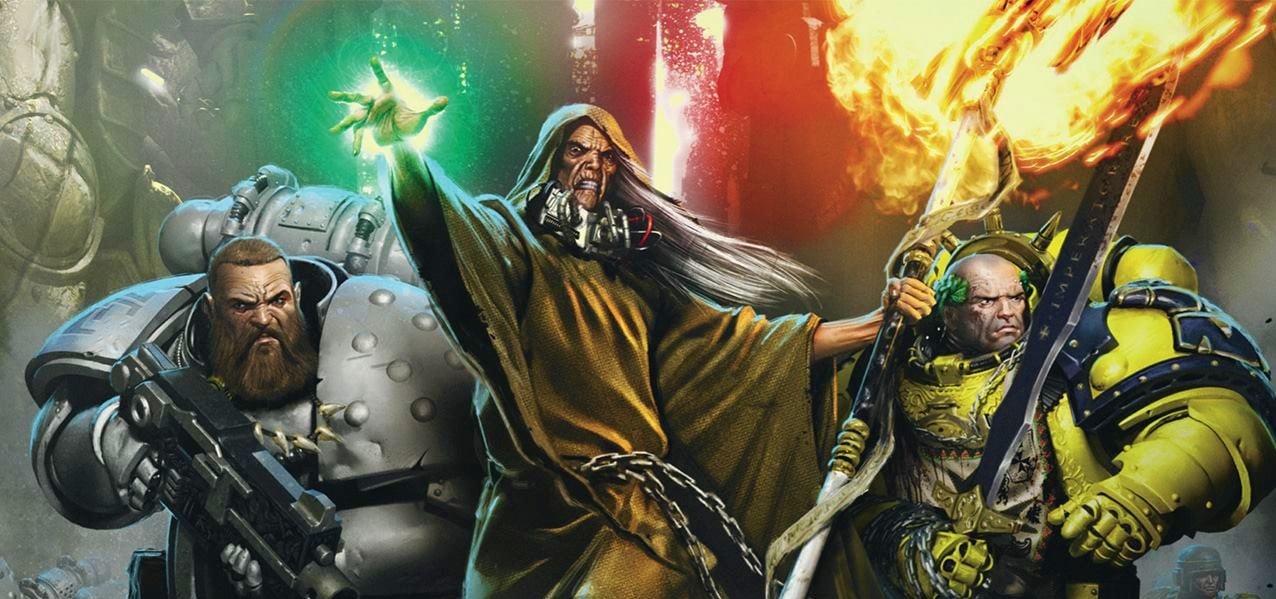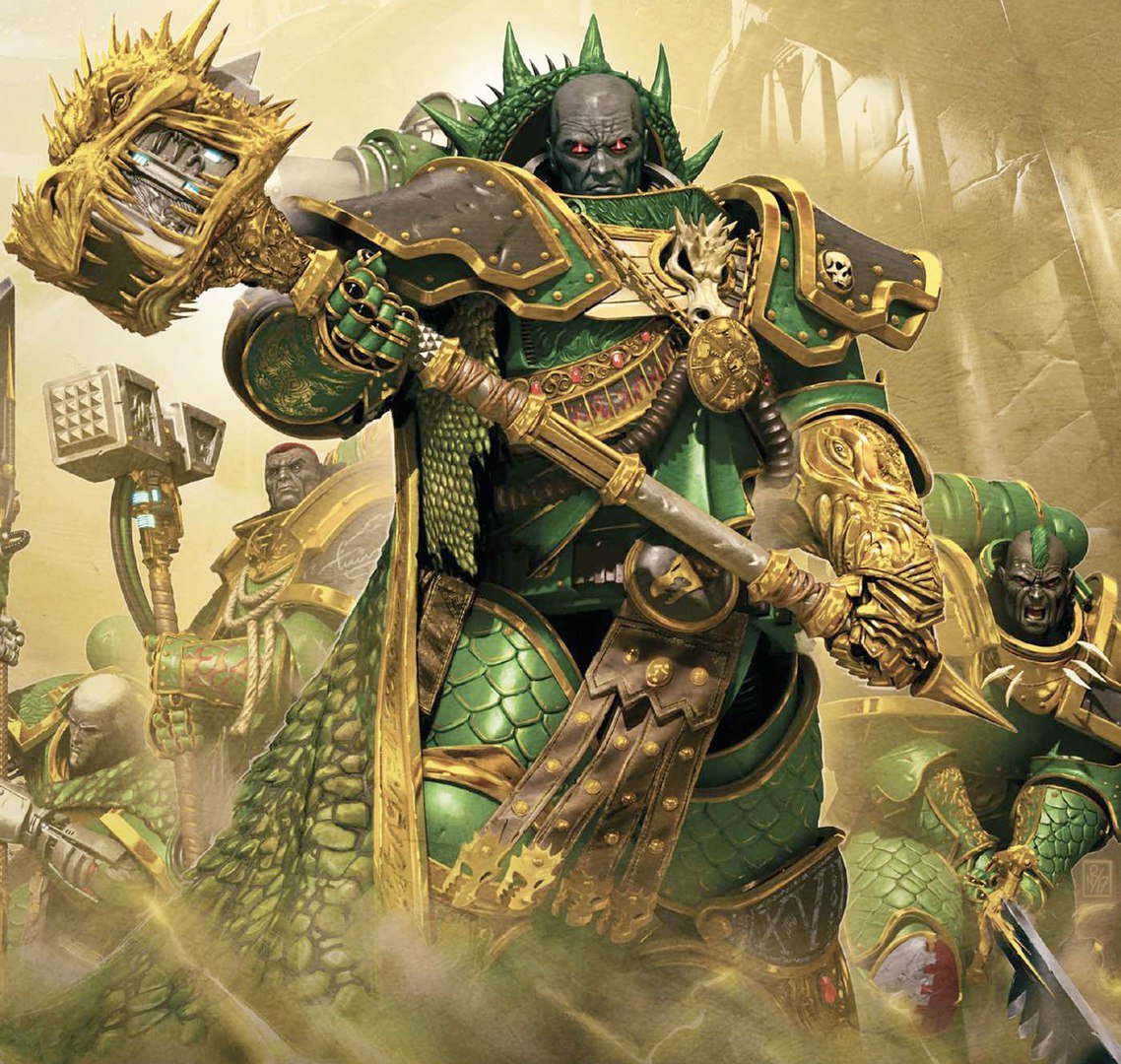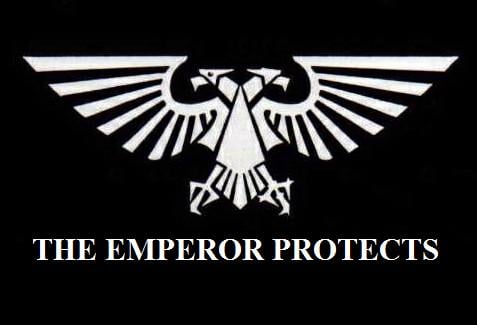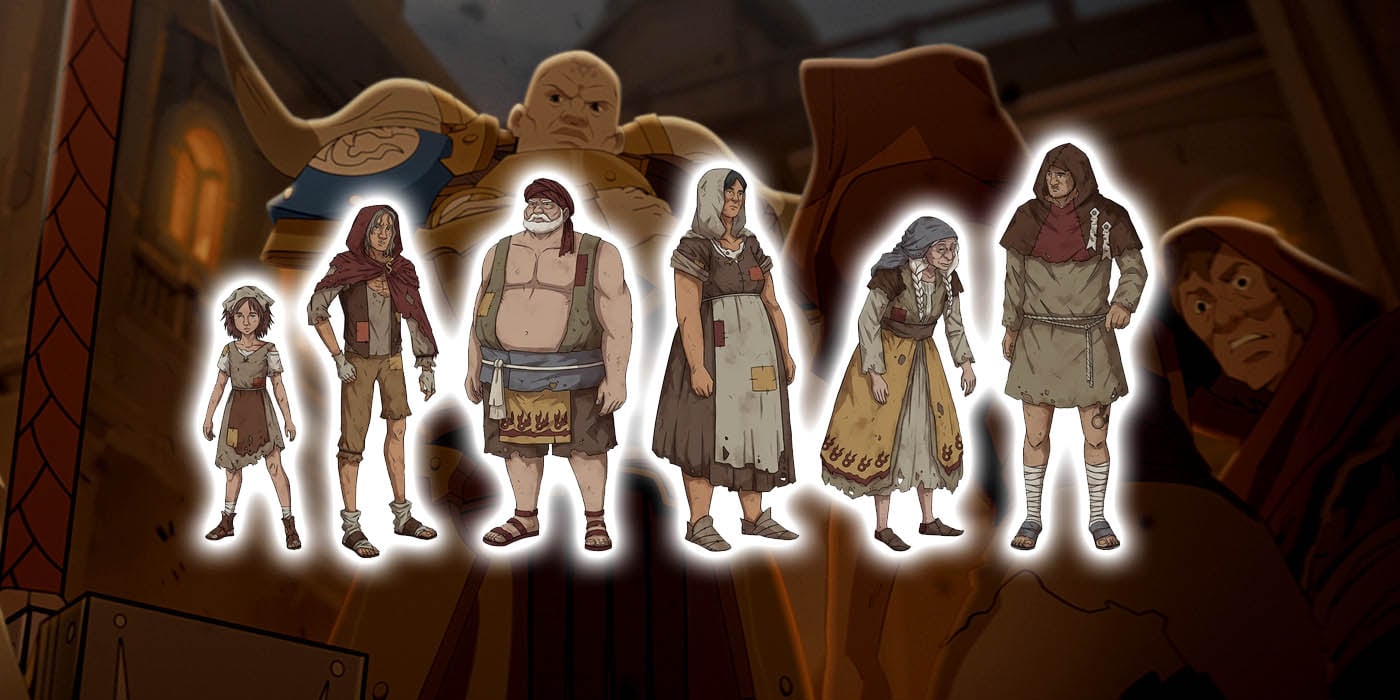Warhammer 40K: Meet The Real Masters Of Humanity – The Perpetuals
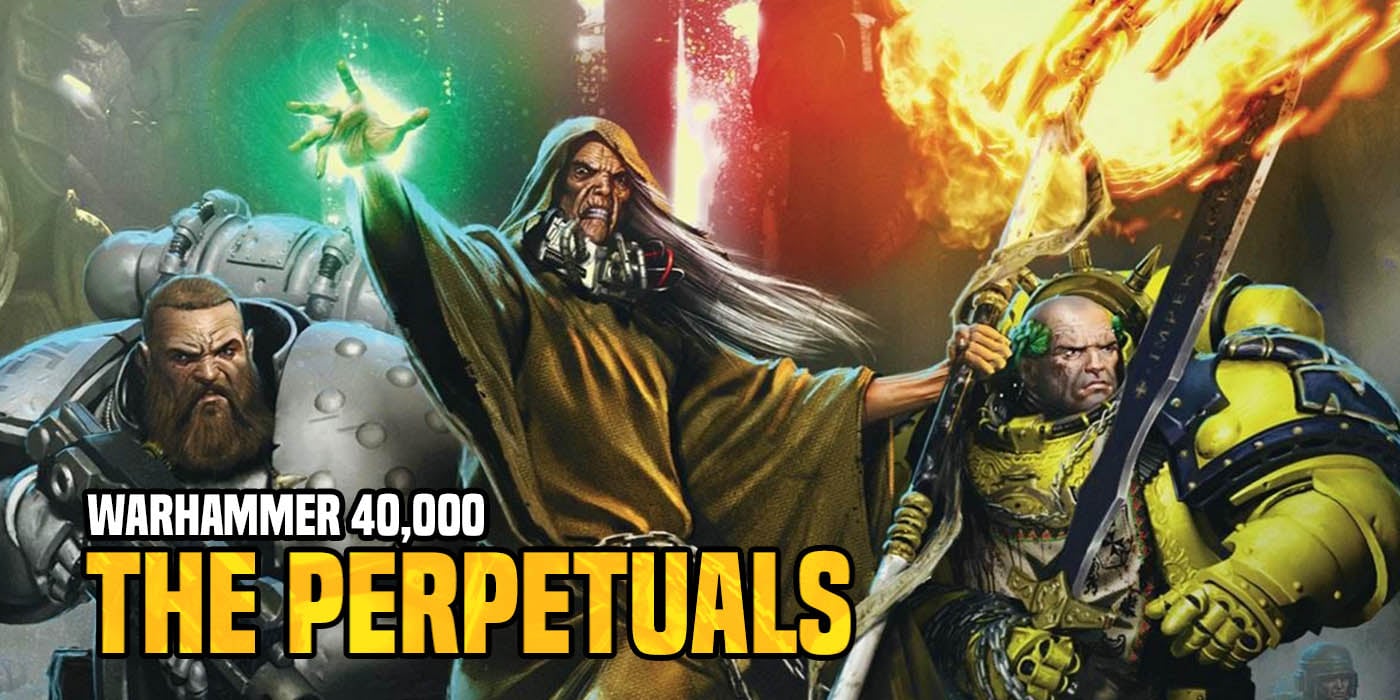

Take a look at the people who really rule mankind. The Perpetuals.
Everything you have been told is a lie. For tens of thousands of years, across all the long eons from the birth of the first man to the coming of the Emperor, humanity has believed itself free. The master of its own destiny. It was only when the Emperor emerged from obscurity to end the reign of the techno warlords and bring unification to Terra that humankind was giving a guiding hand. Only then was the fate of mankind taken out its own hands and control by another, higher, divine power. Or so we have been told.
But this is a lie.
In truth the fate of mankind has never been its own to control. Since before the first word was written, back in the dim pre-history of the species, there have been those on Terra with powers far beyond those of mortal man. These beings have long controlled the direction of human civilization acting as a hidden immortal conspiracy to direct the ebb of flow of human growth. They have used humanity as their playthings, used mankind as fodder in their wars and feuds, and conspired to dominate all. Lurking in the shadows these have made sure that humanity has never truly been free.
I speak of course of the Perpetuals. The immortal gods that walk among us.
Now we delve know into their dark history. Their nature and powers. And their grand plot to control the future of the species.
***Warning- Spoilers For The Horus Heresy and Siege of Terra books***
Who Are The Perpetuals?
The Perpetuals are a group of immortal beings that originated on Earth. They appear to be a divergent offshoot of humanity. The common trait of the perpetuals is that they are functionally immortal. Perpetuals do not age like normal people, and will not die of old age. They have the ability to heal from any wound. If “killed” a perpetual will slowly regenerate themselves and return to life after a time.
A handful of esoteric weapons appear able to kill them permanently. Aside from this, many of them seem to have other powers, but they are not uniform. Some are psykers, but this trait does not seem universal. It is unknown how many Perpetuals there have been or how many are currently active.
Perpetuals can be roughly divided into two groups – natural and artificial. Natural Perpetuals are the original ones, beings who were born that way and could be considered the true Perpetuals. Artificial Perpetuals are ones that were manufactured, both the Xenos Cabal and the Emperor seem to have the ability to do this. With all that said, let us take a look at the Natural-Perpetuals and their traits and abilities.
Ollanius Persson
Ollanius (Oll) Persson is a mythical figure even among the real-life lore of 40K. He is seemingly mentioned in some of the oldest 40K stories dealing with the Imperial Guard and has long held a place in the 40K lore as an important character. At the time of the Horus Heresy, he was said to be the oldest living Perpetual, though it is not clear if he was the first, which could make him up to 45,000 years old. Due to his age, he appears to have known and interacted with most, if not all, of the Terran-born Perpetuals, having relationships with Alivia Sureka, John Grammaticus, Erda, and the Emperor, among others.
Among the Perpetuals, Oll seems both well-liked and well-respected. He does not have any obvious enemies and is normally spoken of well. This is likely due to the fact that he seems to have, for the most part (with at least one big exception), stayed out of affairs and not played any of the great games. He seems to have split with the rest of the Perpetuals at Béziers in France. This was likely after the massacre of Cathars there in 1209 AD.
Rather than try to lead or shape events Oll has generally taken on the guise of a common soldier fighting on the front lines of battles across history. He fought in the Gulf War, at Verdun in the First World War, and at Austerlitz a century before that. He even appears to have been one of Jason’s Argonauts. These represent just a few of the battles and wars he’s taken part in in the tens of thousands of years he’s been active.
Aside from these, his other actions are mostly unknown. Oll was also the original Warmaster, the first to serve and turn from the Emperor back before recorded history. Though this has put him on bad terms with the Emperor the other Perpetuals don’t seem to know about it. The Emperor also doesn’t seem to have come after him in later years, even when he seemingly had contact with other Perpetuals.
Béziers
Persson, despite all his age and knowledge, seems to be an actively religious man. He is a member of the Catheric faith, seemingly deriving from Catholicism or more likely Catharism. However, it is said he “was always a man of faith, for he was born in an age when gods seemed real.” Despite his humbleness, he seems to be the most warrior-ish of the known Perpetuals, fighting in wars again and again. In the pantheon of Perpetuals, one might see him as an Aries of Mars, a god of war.
Aside from his immortal nature, Persson does not appear to have any powers. He does not appear to be a psyker, though his vast age and knowledge do allow him to make use of warp artifacts, and he knows many secrets. Persson is, in essence, the every man of the Perpetuals, the All Person, or Oll Persson. He represents the best of basic humanity, despite his immortally, and pretends to be nothing more than a common grunt trying to do his best in the world. Despite this, or because of this, he played a key role in the defeat of Horus, both arming the Emperor with the Athame onboard the Vengeful Spirit, and buying time for him to defeat Horus – at the cost of Oll’s own life.
Alivia Sureka
Alivia Sureka, unlike Persson, is a Perpetual who will get involved in big things. She was seemingly born sometime in late antiquity, around when doom approached Arcadia. Possibly 1000-500 BCE but no clear date is given. She was active in Denmark sometime after 1100 AD. She was also active in Afghanistan during the Soviet-Afghan war. She apparently had a very close relationship with John Grammaticus and was also friends with Oll Persson, picking up his habit of saying Okay. This would imply that she remained in contact with him more recently than in 1209 AD.
Odense Domkirke, a place from Sureka’s past.
Sureka’s main allegiance ended up with the Emperor of Mankind. At some point, she (like most of the Perpetuals) joined his cause and allied herself with him. It’s not clear when exactly this happened, but appears to likely have been before the end of the Dark Age of Technology. At some point, seemingly during the Dark Age of Technology, Sureka traveled with the Emperor and other Perpetuals to Molech. There the Emperor traveled through a warp portal to seemingly treat with, and trick, the Chaos Gods.
When the Emperor and the rest of his group left Molech, Sureka stayed behind to act as a guardian for the portal and prevent others from accessing its power. She remained there until the Horus Heresy. (Though it does appear she left Molech at least once when she acquired her Ferlach serpenta some 187 years prior to the Horus Heresy) As such it appears Sureka was one of the last Perpetuals to remain loyal to the Emperor, perhaps the last of the natural-born ones aside from Malcador even.
In addition to immortality, Sureka was a powerful empath. This allowed her to feel and read the thoughts of people, and beings near her, and also exert a certain amount of control over them. It is unclear if this power is psychic in nature and tied to the warp or a simple evolutionary quirk. She does not display other psychic powers. Like all the old Perpetuals Sureka is aware of the true nature of the warp and has access to vast stores of arcane knowledge.
John Grammaticus
John Grammaticus was an Alpha Level psyker and artificial Perpetual. John was turned into an artificial Perpetual by agents of the xenos Cabal and severed as an agent of theirs for a period of time. The nature, and timing, of John’s transformation into a Perpetual is somewhat clouded. It is known that he served in the Emperor’s armies during the Unification Wars and fought at the battle of Anatol Hive, likely in present-day Turkey. The novel Legion implies that John was killed in the fighting here and returned to life by the Cabal as a Perpetual. This would make John one of the youngest Perpetuals, placing his “birth” sometime in M29 and making him less than one thousand years old.
Later stories, however, contradict this timeline. In Old Wounds, New Scars it is revealed that John had a relationship with the Perpetual Alivia Sureka that ended sometime during the Soviet-Afghan war, 1989 at the latest.
In addition he knew Oll Persson, and was present when he broke from the rest of the Perpetuals, likely in 1209 AD. In addition to knowing Sureka and Persson, he knew and had met Erda. Grammaticus was also familiar with religious artwork dating from 5,000 AD and earlier, though this could have been learned something he studied much later. All of this points towards a much earlier “birth” date for Grammaticus, likely before 1000 AD.
In addition to his age, his relationship with the rest of the perpetuals is somewhat confused. He had a romantic relationship with Sureka for an unknown period of time and appears to have been friends with Persson. He’d met Erda before, and worked with other artificial Perpetuals of the Cabal. Despite his close ties to several of the natural-born Terran Perpetuals, he seems to have been an outsider, not part of their “club”.
The others seemingly knew that he was artificial and kept him out of their dealings. Strangely, given his ties to the others, he has apparently only met the Emperor once, and that was during the Unification Wars. How the two never met, given that the Emperor sought out and recruited, or attempted to, the other Perpetuals, is somewhat of a mystery.
Two possible explanations arise. One is that John wasn’t on Earth for much of this period. Perhaps he was created sometime around 1000 AD and used as an agent of the Cabal in an attempt to infiltrate the Earthbound Perpetuals. When this failed, due to their standoff nature, John was then extracted from Earth, around 1989, and spent the next several millennia working off-world. Only later, during Unification was he return to Earth, to continue his work.
Another possibility comes with an artifact John is in possession of. He was gifted a pair of wraithbone scissors, by Eldrad himself, that allows a person to travel both through time and space. It’s possible using these that John was born in m29 and then traveled back in time to live a few centuries in the early ADs. These remain theories at this point.
We do know that as an agent of the Cabal, John worked towards the destruction of humanity, for the greater good of all life. He helped convince the Alpha Legion to side with Horus during the Heresy. Later John, along with Eldrad, had a change of heart and broke with the Cabal, and began working towards saving mankind. As a result of this, he seemingly lost his immortality.
Along with immortality and his time scissors, John was a powerful psyker. He could understand any language he heard, and communicate mentally with people across great gulfs of space. He used this power to learn Enuncia. He was able to pierce the Emperor’s psychic image and see the true nature of the Emperor. He is considered an opener of ways and might be considered the Trickster god of the Perpetuals.
The Emperor
The Immortal Emperor of Mankind is by far most powerful of the Perpetuals, though not the oldest. It is said that all the other Perpetuals combined could not match His power. I’ve covered the Emperor a lot before so I won’t go into too great detail here. He is possessed of immense power and wisdom. According to Erda, he was alive during the time of the First Cities, likely around 3500 BCE, and had a relationship with her then. At that time, he went by the name Neoth. He was constantly active behind the scenes during all of human history, at times working with or against other Perpetuals. I think little more needs to be said about the Emperor here.
Erda
Erda is, after the Emperor, the second most powerful of the Perpetuals. Not a lot is known of her history. She seems to be about as old as the Emperor and seemingly met him around 3500 BCE. She seems to be tied with Mother Goddess or Earth goddess figures, and likely either inspired or profited from the worship of them at some point. Indeed Erda is an old German name for Earth. At some point, she became a close ally of the Emperor and worked closely towards his goals for a long period of time.
While there are few details on her powers, she was known to be a master geneticist. Indeed her greatest work may have been aiding the Emperor in the creation of the Primarchs and the Space Marines. While the Emperor was the male genetic donor towards the Primarch Project, Erda was the female donor making her in essence the Mother of the Primarchs and Grandmother of all Space Marines.
At some point during the end phases of the project, while the Primarchs were still gestating, she realized that the Emperor did not plan to let her take part in their upbringing. Fearing the fate that would befall them at the Emperor’s hands she scattered the Primarchs to the stars in an attempt to save them from their father. It should be noted that this story, told by Erda, runs counter to other stories about the scattering of the Primarchs which generally attribute it to an act of Chaos.
It’s possible both are true, however. Maybe Erda lowered the palace’s defenses to allow Chaos to steal them away, or simply informed the Chaos Gods of their existence. Maybe she struck a pact with them, and they both worked towards the scattering of the Primarchs, or maybe she was misled by the dark gods.
After this act, she fled to the deserts of Mauritania and remained there, staying removed from world or galactic events. Her friend and comrade Amar Astarte remained in the Emperor’s service and helped to finish the Space Marine project, before ultimately turning on the Emperor and trying to destroy them.
Malcador the Sigillite
Malcador is another well-own and often covered figure, so we will be brief here as well. At the time of the Horus Heresy, Malcador claimed to be 6,700 years old, making him by far the youngest of the Perpetuals we’ve discussed so far. He also claimed to remember his own birth, leading some to speculate that he was an artificial Perpetual. Malcador was a member of the Sigillites, an order dedicated to preserving old technology and knowledge. He may also have been known as Brahm al-Khadour, an infamous figure during Old Night.
After meeting the Emperor, and suggesting He take that title, Malcador became the most loyal of His followers. He soon rose to be the second most powerful man in the new Imperium and the Regent of Terra during the Great Crusade. When other Perpetuals started to abandon the Emperor, Malcador remained loyal and enigmatic. He was a powerful psyker, and exhibited a wider variety of powers than any other Perpetual, aside from the Emperor.
Other Perpetuals
The six Perpetuals described above appear to be the oldest and most active on Earth. In addition to them, there are another six known Perpetuals and several unknown ones. The other known ones include:
- Damon Prytanis an artificial Perpetual assassin working for the Cabal.
- Vulkan, Primarch of the Salamanders Legion. It’s unclear if he falls under the natural or artificial category. He seems to have been gifted his powers by the Emperor, but this took place during his creation, and given that both his “parents” are Perpetuals this may count as natural.
- Anval Thawn, a Grey Knight and apparent Perpetual. His status as one may have been retconned.
- Cyrene Valantion, the only survivor of the destruction of Monarchia, she was killed by Custodian Guards and resurrected by Erebus, making her into a Perpetual. She seems may be working for the Cabal as well.
- Mordrac, a Sergeant in the Emperor’s Children Legion and a traitor. He became an artificial Perpetual after the Heresy.
- Dalia Cythera, a member of the Administratum, she became an artificial Perpetual during the Heresy and a guardian of the Dragon of Mars.
While all of these Perpetuals are powerful beings in their own right, and have their own stories to tell, none of them took part in the vast bulk of human history. They were indeed, not part of the so-called Perpetual “club” that affected more of human fate, nor part of the Perpetuals’ grand conspiracy, but that’s something we will cover later.

